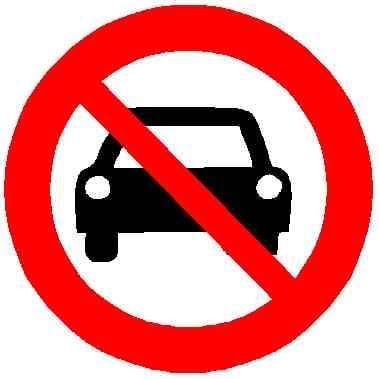The tracks are the limiting factor. The acela trains are basically the TGV. They could go the same speed with better infrastructure.
The tracks and I’m sure the distances between stops. Hard to hit full speed when you already have to plan to slow down for the next stop.
Part of handling that is having both local and limited-stop services (which they likely already do) and a good local/commuter train network.
I’d think, in order to hit full speed even with a limited stop or express train, you’d still have speed issues coming up on a metro area. You can’t just blow through Philly at 160 even if you hadn’t planned on stopping there.
You can but the track has to be built for it. Japan has stations that are passed at 320km/h (200mph). You need minimum four tracks (two platforms, two passing) and curves/gradients suitable for the speed, along with noise mitigations as necessary.
If you’re trying to re-use tracks and stations built in the 1800s that’s possibly less feasible.
In an ideal world you’d have bypasses or tunnels to help them keep up speed, but that all depends on land allocation and investment. If you’re stuck with old windy narrow tracks then yes youre going to be limited.
Trains like shinkansen can go very fast through dense urban areas, i think mostly in tunnels - but also because they spend a lot to straighten the routes. Obviously there are still some slow sections, but they minimize it by design - and probably a willingness to bulldoze historical land ownership.
I guess in Philly the route probably winds around a bit. https://www.openrailwaymap.org/ It looks like all lines funnel through a couple of very tight curves around the centre. That looks like quite a sensitive choke point.
But apart from that section it looks like the acela limit is over 100mph for quite a lot of the urban area around Philly, which isn’t too bad. Its not like its crawling around at 60mph for half the distance.
There’s another interesting looking slow chicane in Wilmington. In that case there’s what looks like an ideal bypass line already there for any express. It runs through a massive siding (freight maybe?) that is limited to 10-30mph. Looks like a no brainer to me, strengthen those bridges and run any express through that. plenty of dead space around there to reconfigure just one level crossing i think to worry about. most of it is 3-4 tracks already judging by google map.
I heard that US freight and passenger rail don’t like to share and enjoy though so probably that’s a non starter.
The speed with high speed rail is usually made between cities, less so in dense areas. But that doesnt mean there is no gains to be made by improving track and running at say 130-160 km/h (80-100 mph)
To my knowledge these trains can alao accelerate quite fast because they are electric trains.
The express service is still considerably limited in the DC to Boston because it’s like 40% metro and still has to slow down. You have DC, Philly, NY, and Boston all with substantial suburban infrastructure and it adds up.
In the best of situations on express it’s hard to justify express acella unless you are really cash strapped.
The Acela trains are far from being on par with French TGV, German ICE, or Japanese Shinkansen.
For a European, this is just a medium speed train.
As long as they’re running on the same tracks as freight, that’s always going to be the case.
The Northeast Corridor (where the Acela runs) is owned by Amtrak and is not shared with freight. It’s the track curves that are the problem. This is some of the oldest right of way in the US.
For anyone who doesn’t know, freight trains make a lot more money and will illegally take the right of way over passenger trains and just pay the fines. This happened to me on my first and last train ride in the last decade. Waited over an hour on the tracks as the angry conductor explained the situation.
This is why America will never compete with places like japan or China because they build dedicated rail for their transport networks.
deleted by creator
Amtrak has a bunch of infrastructure improvements that will make a bt of difference but they’re too limited. We have over a century of deferred maintenance on the rails.
It doesn’t matter how fast the train sets can go, when your limited by infrastructure like this
Gotta love those rails. That are more like wet spaghetti. No idea how they can ride on them at all.
“State of the art” mhmm
Sadly, the art is “Impressionism”
deleted by creator
These are good trains. The problem are the tracks. There’s only one segment of the northeast corridor where they can reach 160.
They’re French trains, the only problem with the rolling stock is that it took them so long to get them into service
Serious question, why doesn’t Amtrak just build its own tracks so they don’t have to deal with the freight companies?
Prohibitive cost?
As long as certain people expect Amtrak to be profitable, and we’re not willing to invest in fixing a century of deferred maintenance, how can we possible dig out of this hole?
My hope is in state supported routes, although they’re too limited won’t be fast or comprehensive. For example New Hampshire is not a place you’d find enough people to build profitable high speed rail. However they own control some existing track given up by freight rail. In particular I understand there’s a track to Manchester that connects to a track in use by MBTA commuter rail, and they’re considering rail service between Boston and the capital, including the airport. I don’t know if it will happen, but it would only be because of the state.
A lot of investments from the infrastructure act were to study state supported routes and how to add them to the Amtrak network. This is a big deal, because rail is so much more useful when added to a network. We’re stuck at the beginning where each project is considered for only its own merits, and need to build to the point where they can also be considered for the overall network
I really wish America had faster trains like Europe







